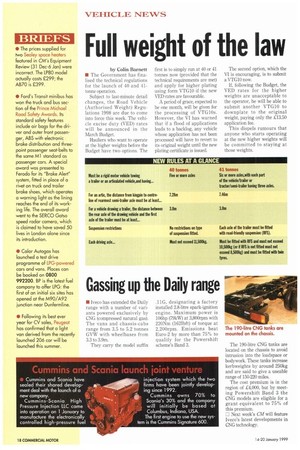Full weight of the law
Page 20

If you've noticed an error in this article please click here to report it so we can fix it.
by Colin Barnett
III The Government has finalised the technical regulations for the launch of 40 and 41tonne operation.
Subject to last-minute detail changes, the Road Vehicle (Authorised Weight) Regulations 1998 are due to come into force this week. The vehicle excise duty (VED) rates will be announced in the March Budget.
Hauliers who want to operate at the higher weights before the Budget have two options. The first is to simply run at 40 or 41 tonnes now (provided that the technical requirements are met) and apply for higher plating using form VIG10 if the new VED rates are favourable.
A period of grace, expected to be one month, will be given for the processing of VTGIOs. However, the VI has warned that if a flood of applications leads to a backlog, any vehicle whose application has not been processed will have to revert to its original weight until the new plating certificate is issued. The second option, which the VI is encouraging, is to submit a VTG10 now.
If, following the Budget, the VED rates for the higher weights are unacceptable to the operator, he will be able to submit another VTG10 to downplate to the original weight, paying only the £13.50 application fee.
This dispels rumours that anyone who starts operating at the new higher weights will be committed to staying at those weights.








































































































